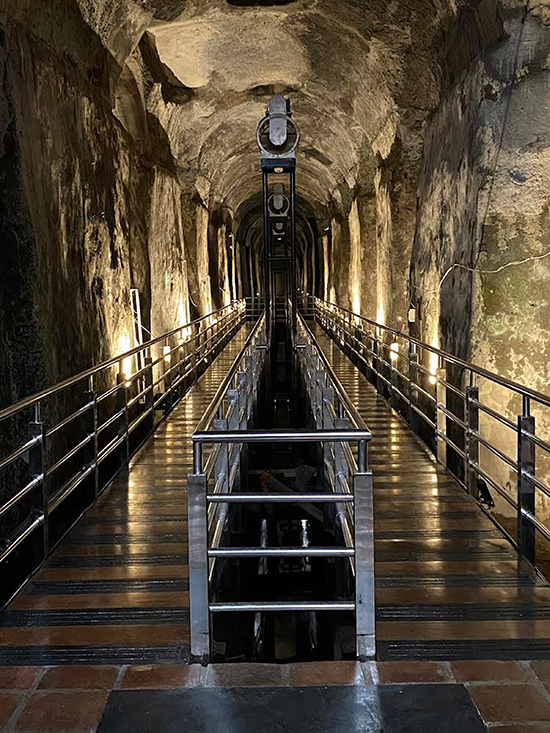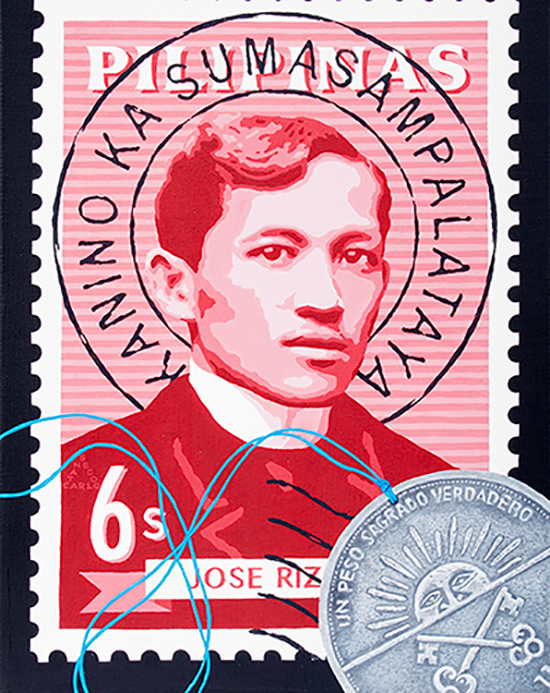Rizal’s Last Christmas
One wonders exactly when Jose Rizal realized that Dec. 25, 1896 would be his last Christmas on earth.
The records show that he was arrested onboard a ship to Spain in October and returned to Manila just after the Feast of All Souls. He was brought immediately to Fort Santiago where he was held incommunicado from family and friends until the last days before his death.
For four years before that he had already been living a disembodied life, an exile in distant Dapitan, cut off from the rest of the world, and most of all Manila, which was teetering on the edge of revolution. His letters home were full of remarks on “pasalubong,” fruit trees, and the life of a gentleman farmer. There was none of the fire and ice of his novels, none of the satirical humor of the Noli and the Fili. It was as if all the savoir-faire and wit acquired in Madrid and Paris had been bleached out of him.
Marooned in Mindanao, he would not have realized how important his books had become, how they had given voice to 300 years of resentment and unrest; nor would he have anticipated that men such as Andres Bonifacio and Emilio Jacinto, against all odds, would have put together a secret brotherhood such as the Katipunan.
He had become unknowingly the patron saint of a Revolution he was uninterested in; yet witnesses’ affidavits presented at his trial would say that his portrait hung enshrined in the KKK’s makeshift meeting hall.
On the surface of it, Manila in December 1896—then as now—was not concerned with any of this and more engaged in the trappings of the most important Catholic feast of the year: the polishing of the great silver candlesticks and altar pieces of the many churches in the Walled City, the painstaking assembly of august “belen” (or nativity scenes), the planning of parties and fancy embroidered frocks for Christmas day.
But beneath it, there was a sense of terror that had been unleashed by the attack on the city’s water reservoir, El Deposito in San Juan. (The Deposito’s underground tunnels, which recall the Basilica Cisterns of Istanbul, have been rehabilitated by the San Juan city government; and it has commemorated the same, ironically, with an outsized Castilian fan created by the venerable Case Mercedes and Monchet y Compania.)

Believing correctly that control of Manila’s water supply (and its highest point) would give him a decisive advantage, Bonifacio launched the first KKK attack there in late August.
Those shots fired at that first battle, despite the fact that it ended in an absolute rout for the Filipino ragtag army, would sign Rizal’s death warrant.
For it was Jose Rizal, and only Rizal, who, in the Spanish mind, was at the center of the maelstrom of events that they correctly sensed would put an end to their empire.
The city had fallen into the grip of fear; dispatches from the foreign embassies detailed the rumors that the “native servants” would rise up and murder their employers in their sleep. There were reports of pistols, knives and bullets gone missing from the stone mansions, presumably spirited away to build up an unholy arsenal for the Katipunan.
Did anybody even notice amid the hysteria that Rizal had returned to Manila and had been hidden away in its most famous stronghold? To maintain that secrecy, it was decided that Rizal would not be given a public trial but would be the subject of “military justice” in a court martial. Neither would he be defended by any of the eminent lawyers of Manila. Instead he was presented with a list of 106 names, all Spanish, all junior officers (none higher than the rank of lieutenant) as possible legal counsels.

Rizal was presented with that roster on the Feast of the Immaculate Concepcion, again an official and religious holiday, an occasion when Manila would traditionally pause in the middle of the Christmas delirium. He would select the brother of the escort assigned to him a decade earlier, Luis Taviel de Andre, who had been tasked to shadow his every move when he returned to Manila briefly a decade earlier.
On Dec. 11, Rizal was then formally arraigned—and astoundingly, according to the records, “the procedure for the confiscation of his properties and other assets to reimburse the government in the amount of one million pesos for the damage that Rizal has inflicted on the nation” on the same day.

With chilling precision and what one historian called “deliberate speed,” his trial rolled out, defying the usual Spanish lethargy in all things, pausing only for a change in the Spanish Governor-General on Dec. 12.
Spain had not been taken completely unaware and, whether or not they admitted it, they had been galvanized into action by the events of August 1896. There were executions at the Luneta and also in Cavite of men suspected of being ringleaders of the rebellion. A tougher boss, Don Camilo Polavieja, was dispatched to the Philippines along with better-armed reinforcements led by a new commanding general.
They were preparing to mass a counter-offensive against revolutionary forces in Cavite and other provinces. In their minds, the Spanish had captured the treacherous serpent that led this infamy and were intent on cutting off its head.
He would have supped on cold rice, perhaps some adobo and dried fish. It was pitiful and also somewhat glorious. For, before New Year’s Eve, Rizal’s heroic death would open a new era for his beloved Philippines.
In the background, the Katipunan’s Magdalo and the Magdiwang forces had met in Imus to come to some kind of working arrangement. And at this assembly, notes scholar Jim Richardson, “Paciano Rizal arrived, bringing the shocking news that his brother José was likely to be executed.”
Aguinaldo would later recall that “he and Bonifacio had previously agreed that the Katipunan should attempt to rescue the hero, but Paciano thought such a mission would inevitably fail, and said his brother would not want others to sacrifice their lives on his behalf.”
In Manila, events moved in deadly earnest. In a burst of bureaucratic zeal, the judges were assigned on Christmas Eve, Rizal was once again shown the list on Christmas Day, and the court martial was held on Dec. 26—the very same day his death sentence was pronounced. In just three short days, Rizal’s life was over.
Our hero’s last Christmas was thus both bitter and abrupt, marked in a cell of cold stone walls, echoing with the toll of Intramuros’ church bells as they rang every hour, in an ominous count of passing time.
He would have supped on cold rice, perhaps some adobo and dried fish, cooked on the same alcohol-burning stove that he had used while studying abroad. It was pitiful and also somewhat glorious. For, before New Year’s Eve, Rizal’s heroic death would open a new era for his beloved Philippines.
Carlos Tanseco’s exhibit, “Alias Elias,” is at J Studio, La Fuerza Compound, Makati, till Dec. 30; while the exquisite Casa Mercedes fans are available on Lazada.



